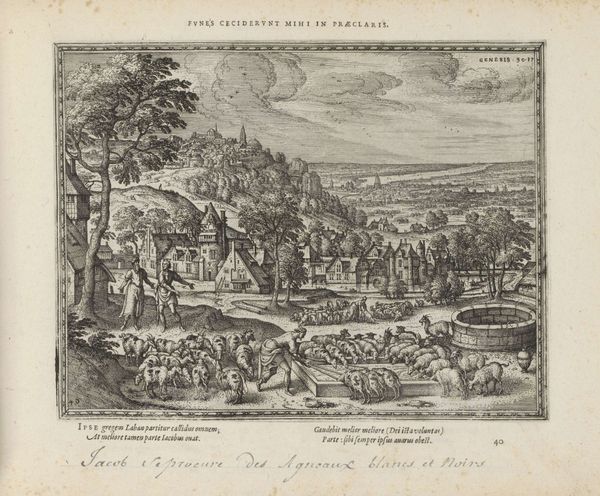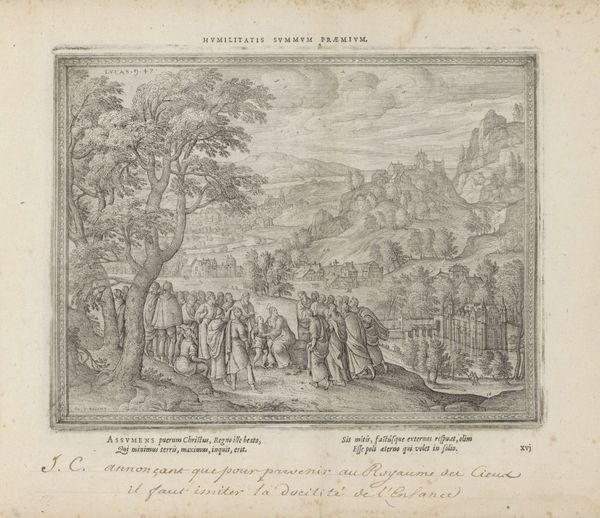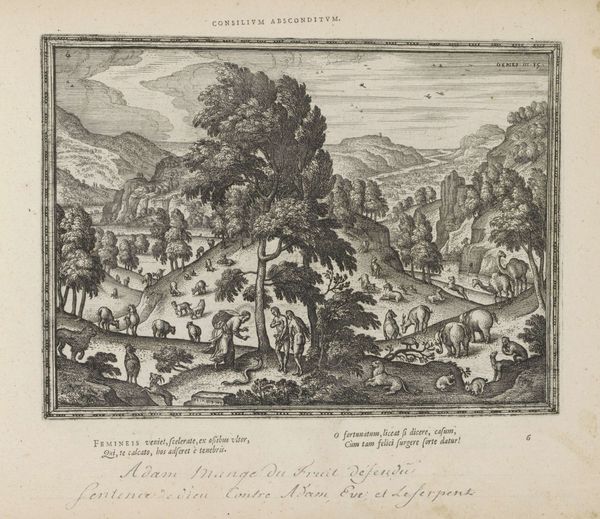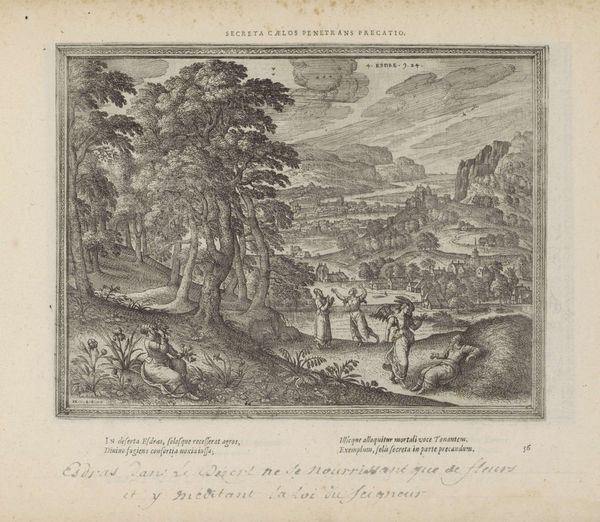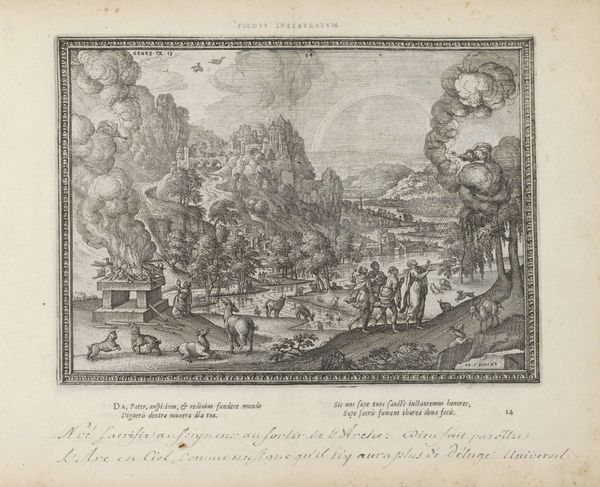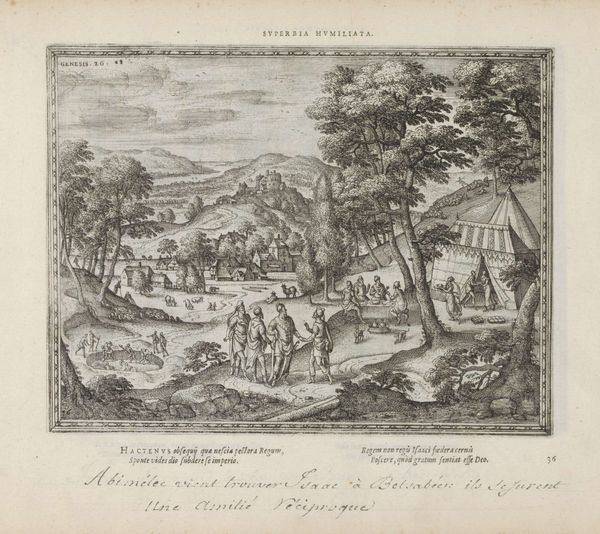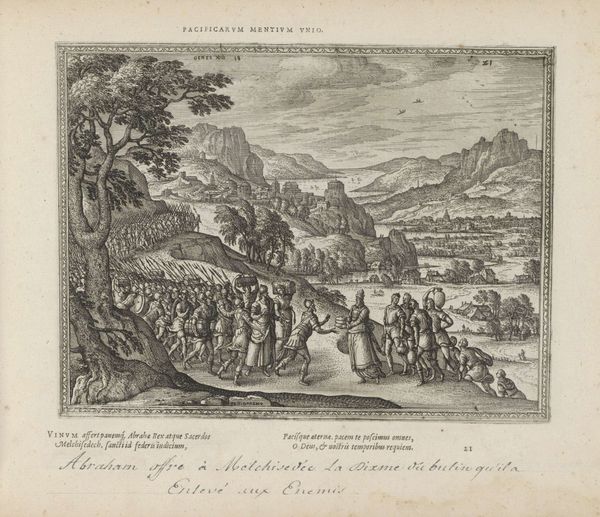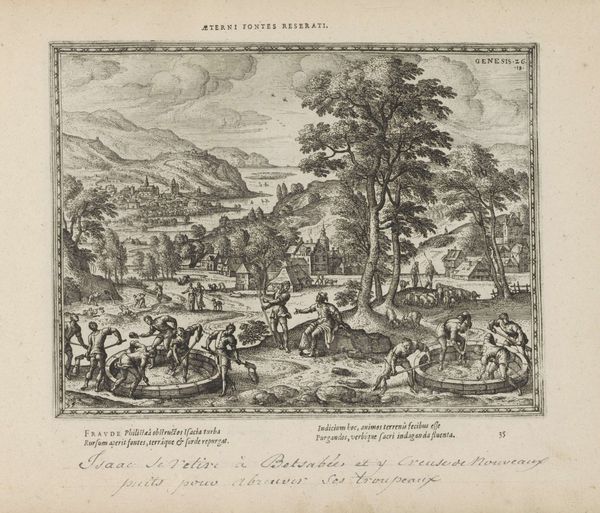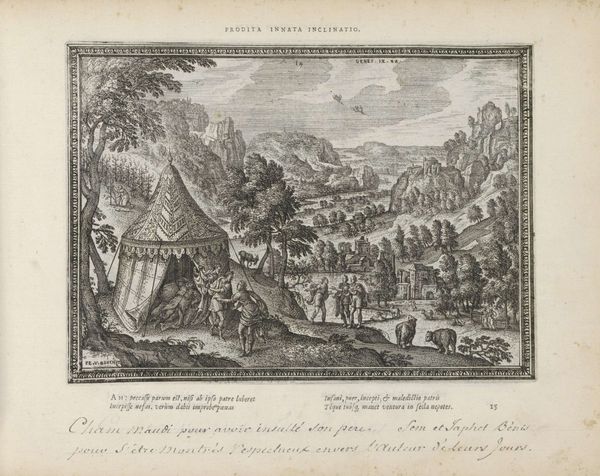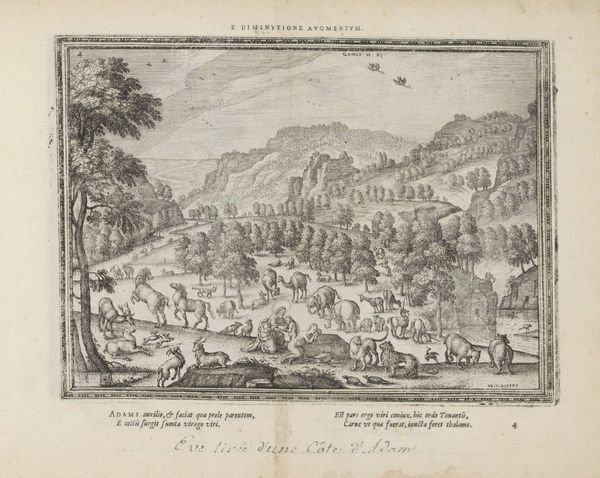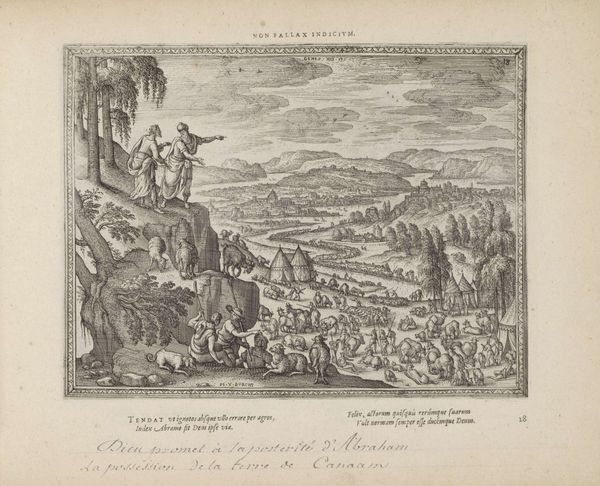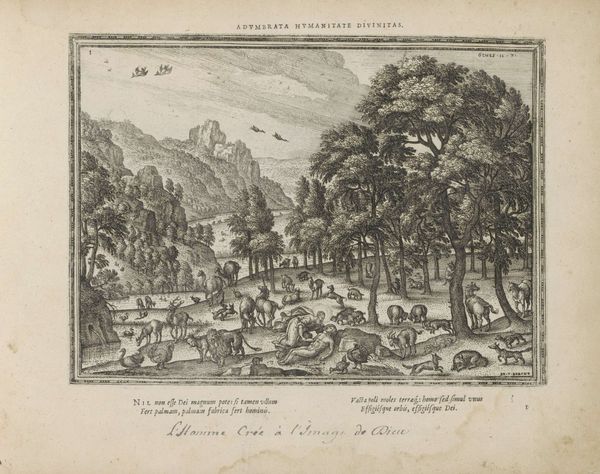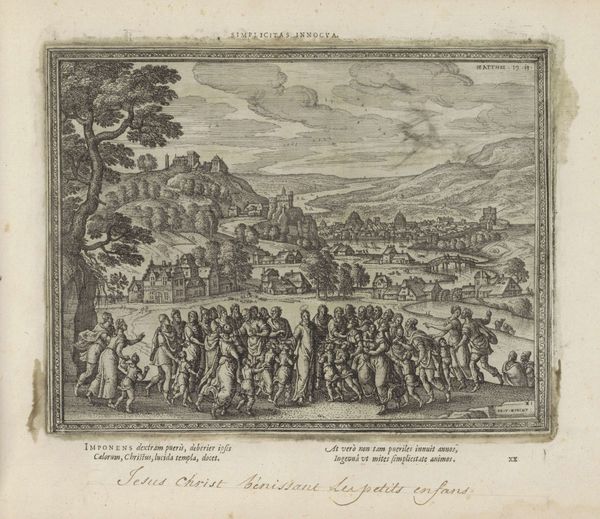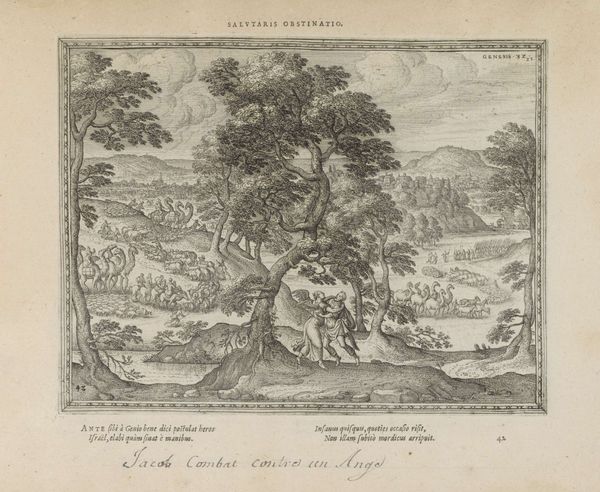
print, engraving
# print
#
old engraving style
#
landscape
#
genre-painting
#
history-painting
#
engraving
Dimensions: height 187 mm, width 244 mm
Copyright: Rijks Museum: Open Domain
Editor: Here we have Pieter van der Borcht the Elder's engraving, "Jacob Rolling the Stone from the Well," made sometime between 1582 and 1613. It's incredible how much detail he packs into this scene. All the figures in the foreground, the sheep milling about, and the incredible distant landscape. I'm curious, what do you see in this piece beyond just the surface level? Curator: For me, it speaks of unveiling, not just literally with Jacob revealing the well, but of revealing deeper truths. Notice how the text at the top, "ARCANORVM DETECTRIX PROBITAS" translates to "Probity is the revealer of secrets." Editor: Oh, that's interesting! So it's not just about Jacob’s physical action, but a deeper symbolic meaning? Curator: Exactly. Consider the well itself. In many cultures, it represents the subconscious, the hidden depths within ourselves. Jacob removing the stone could symbolize overcoming obstacles to access that inner wisdom or to fulfill a divine promise, symbolized by his love for Rachel. What resonates with you regarding the landscape's role in all of this? Editor: I guess I hadn’t really thought about the landscape much. But it does give a sense of this story playing out in a larger, almost divinely ordained context. Curator: Precisely. The landscape isn't just scenery; it's a stage upon which these significant symbolic acts are performed, reflecting the universal implications of Jacob's story. Think about how often landscapes represent the inner life within a human. Editor: So, in a way, it's about accessing the potential for goodness and love, a potential hidden but always present? Curator: Indeed. And made possible only through diligent action, a physical act with heavy symbolic ramifications. It causes me to consider our collective memories and how they relate to universal symbolism, wouldn’t you say? Editor: Definitely. It makes me want to look more closely at landscapes in other works, always looking for symbols and meanings hidden beneath the surface! Curator: That’s wonderful! Always probe the art and let the art probe you.
Comments
No comments
Be the first to comment and join the conversation on the ultimate creative platform.
